Electric car prices are crashing, and with price discounts since the start of the year, a new ‘cheapest model’ was elected, the GWM Ora, which undercut the next cheapest model, the BYD Dolphin, by about $4,000. After releasing in Australia in 2023, I’ve finally driven the cheap electric car, and I have some thoughts.
I didn’t squander my time with the GWM Ora. While it is very much a city car, and I got some city action under my wheels, I decided to push the limits of the Ora, and take in on an 800km road trip. A trip we’d taken the similar Nissan Leaf on, and popular expensive models like the Kia EV6, and the Polestar 2.
Here’s what I thought of the experience as a whole, as someone who calls the GWM Ora’s nemesis, the MG4, my favourite EV at the moment.
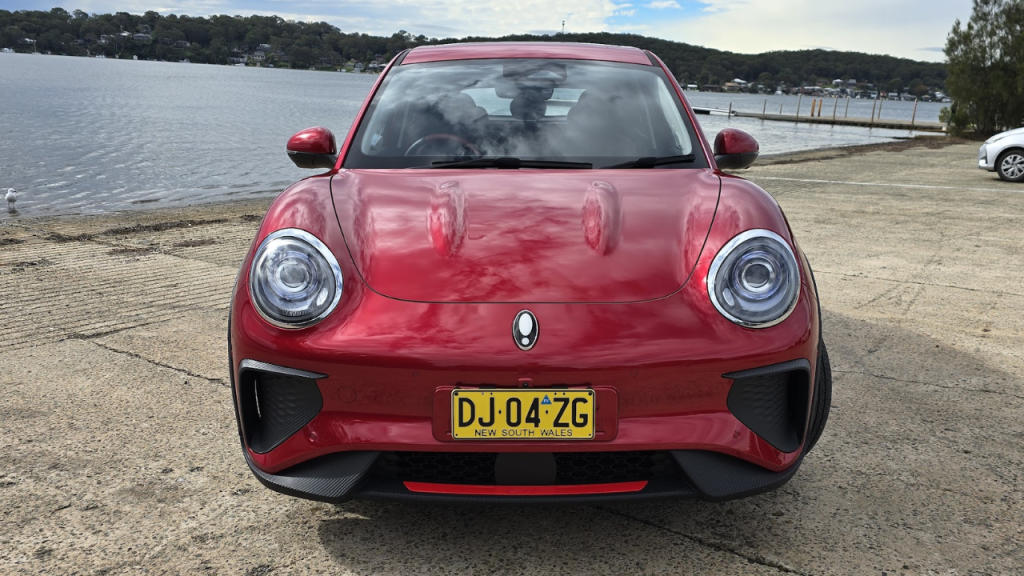
GRWM GWM
Alright; some housekeeping first. We weren’t allocated the cheapest model, the GWM Standard Range, and were instead allocated the GWM Ora GT, the most expensive model. It only has 50km extra battery range that we have to factor in anyway, though it does have slightly better road feel on 18-inch rims, sporty styling, and it does have automatic parking. You can read about the differences here.
The GWM Ora Standard Range has a WLTP-rated battery range of 350km. the next two models up, the Ora Extended Range and Ultra, have 420km WLTP range. The ‘GT’ has a 400km WLTP battery, with 20km removed by the larger wheels. Every model caps out at 80kW DC charging in public, and there’s obviously a 2.4kW car-to-wall plug charger included.
All models include Apple CarPlay (Android Auto apparently will be added with a software update), leatherette seats, electric seats for driver and passenger, 360-degree around-view camera, autonomous Emergency Braking with pedestrian, cyclist and crossing detection, lane keep assist and collision warnings.
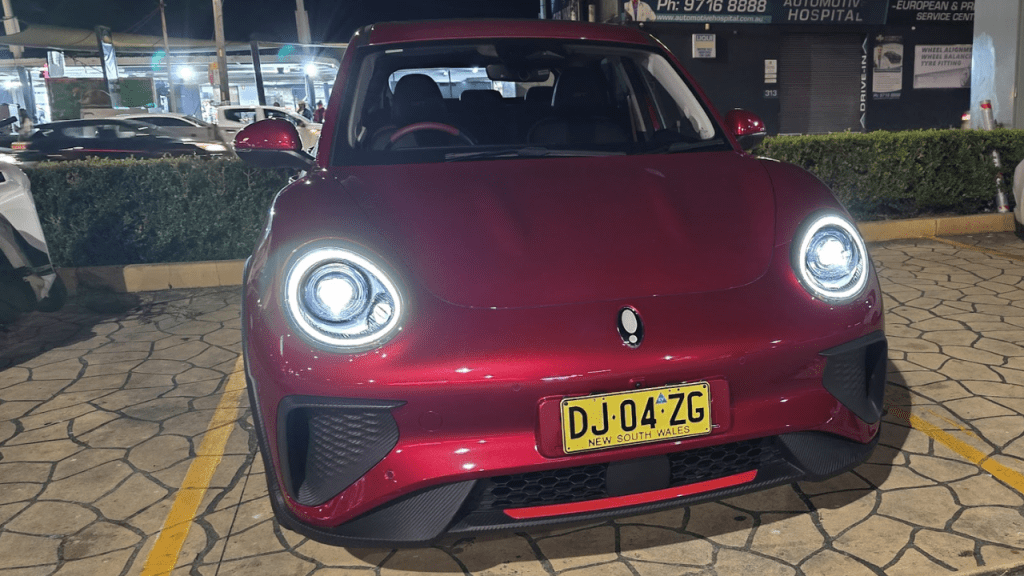
The Ultra adds a hands-free electric tailgate, a panoramic sunroof, a heated steering wheel, ventilated front seats with heating and massage controls, and auto-folding electric mirrors.
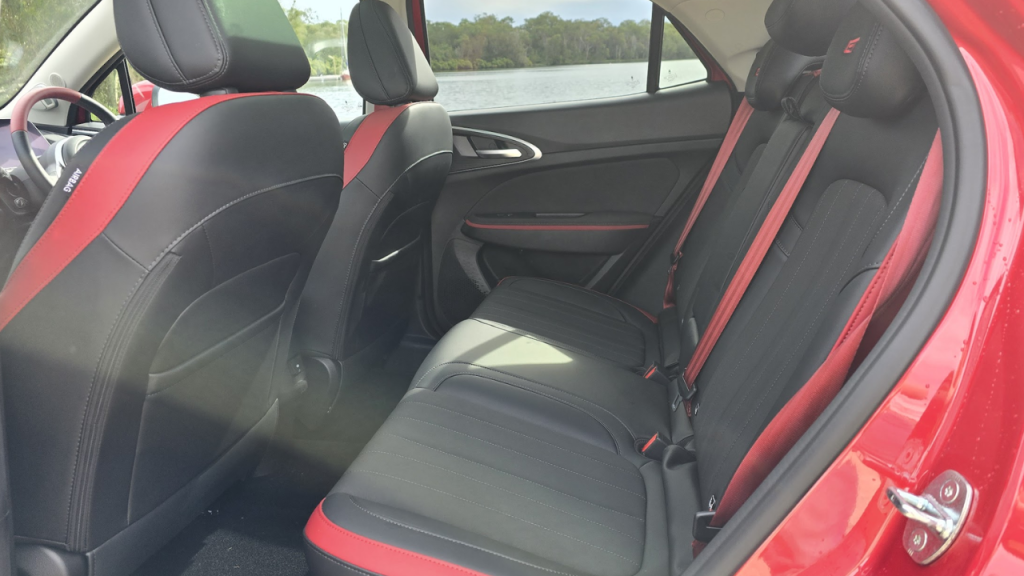
For $35,900, that Standard Range model is quite attractive. At the base level, such a nicely sized car, with a 360 camera, and electric seats, is very attractive. It’s an easy thing to drive, although the operating system isn’t the most alluring and it doesn’t come with inbuilt navigation. That’s ok, we can forgive the Ora for that, though Android users (such as myself) would be left quite disappointed.
Across the range, ascending to $40,990 (Extended Range), $43,990 (Ultra), and $46,990 (GT), these prices are also quite competitive, particularly against higher-end variants of the MG4 and the BYD Dolphin.
But that’s all theory. Let’s push it.
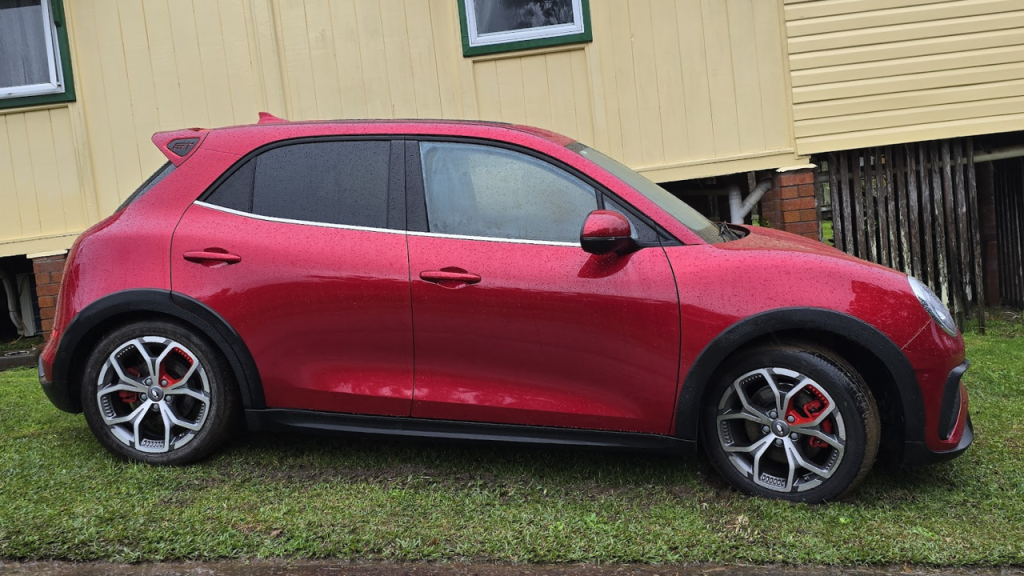
Let’s head north
This car underscores why owning an EV is still very much a ‘nice to have’ for many drivers. It’s not out of hate for the GWM Ora, nor is it coming as an electric car hater, but I really tried to make this experience work as well for me as I could.
The constant rain and cold of the trip was not helping the car’s range efficiency, but these were the conditions we were given.
A WLTP rating of 400km isn’t a lot, but we can make it work for an 800km journey. After all, we pushed the MG ZS EV, once the cheapest EV in Australia, even further than this, and it offered significantly lower range at the time at a higher price.
This journey was a bit different though, because the bulk of it was performed on a single day, rather than split across several days. Starting in Sydney: on the Friday, I travelled up to my brother’s house (in Newcastle), on the Saturday, I travelled up to my grandfather’s house in Kendall (south of Port Macquarie). On the same day, I’d be returning to Newcastle (to my Dad’s house), and then the next day, back to Sydney in the afternoon. From beginning in Sydney to returning, on top of driving I would do around the city, it equates to just under 800km.
But being an EV driver requires quite meticulous planning when it comes to day trips like this. You should be well versed in apps like Plugshare, that show where fast public EV chargers are located across the country, and you should also be prepared for said chargers to not work. I’ve reviewed dozens of EVs in my time at Gizmodo Australia, and I’d say I’ve come across non-functional public chargers constantly, confidently with every long trip I’ve gone on.

Knowing I’d be pushing the GWM Ora GT’s battery for everything it had, I used the Cameron Park Evie charger to top-up the car battery on Friday night, before charging the battery overnight at my brother’s house. My brother doesn’t have a charging wall box, because he doesn’t own an EV (and even then, he might not buy one), so to charge at his, I had the car’s included wall cable.
We have reached a hiccup already, though. Charging overnight at the public charger took about 40 minutes, and it only got me up to about 85 per cent. The GWM Ora’s maximum rated charging capacity is 80kW DC, and this tapers off the higher the battery is (however, the highest I ever saw the battery charge was at 69kW – the charging and battery information present on EV Database appeared to represent my experience quite well). I was waiting around in the cold for 40 minutes, to save time on my trip tomorrow. Believe it or not, you’ll read on to see why I was thankful that I did this.
The next day, leaving at 7:30am, I head straight to the fast chargers at Karuah, north of Newcastle. Again, I was charging for a similar time, because I needed to maximise the battery. The charging location was only 50km from my starting point that day, and about 150km from my return point.
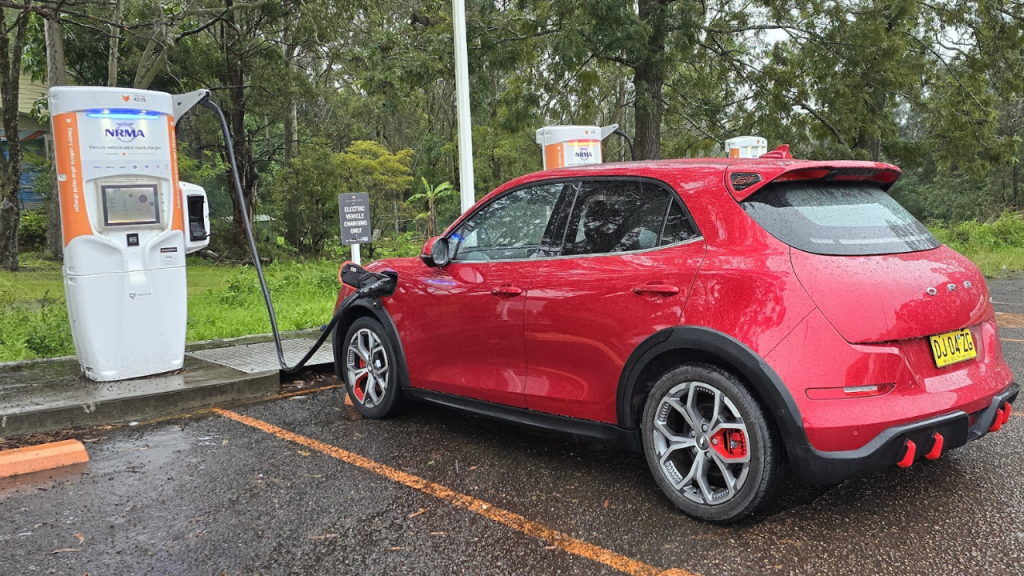
I then elected to charge up at the Evie chargers at the Taree truck stop, again to maximise time-saving. Another 40 minutes, including waiting for a Tesla driver to finish charging. Both charging sites had an out-of-order charger.
I arrived at my grandfather’s, two public charging stops later, and stayed around long enough for the battery to charge up about 10 per cent (From 60 to 70 per cent, so about 4 hours), and started to head back. I drove through the Evie charging spot in Taree again, to see if I could put a quick charge in, but there was a two Tesla queue. I made the tricky decision to keep on driving…
Let’s head south
Here’s the thing about ‘WLTP’ – it’s a rating. It stands for Worldwide Harmonised Light Vehicle Test Procedure, and it’s not a guarantee. It’s an indicative figure, based on a mixture of driving conditions, of what your car’s capable range is.
In a highway setting, while the GWM Ora GT is rated at 400km WLTP, I was getting more like 280km – perhaps even less. That’s not surprising – EVs are more efficient in cities than on highways – but that’s why I was doing all this charging.

My overconfidence actually almost got the better of me on the return trip. Skipping Taree, I drove back to Karuah, optimistic that the battery would last that long. It did. It had two per cent remaining on arrival, with air conditioning disabled on the way back. Had I been driving the Standard Range, I would never have made it to Karuah.
At Karuah, I was waiting behind two cars to finish up, before I was going to sit for quite a long time to charge the GWM Ora GT up. One car was charging all the way to 100 per cent, so I was going to be there for a while.
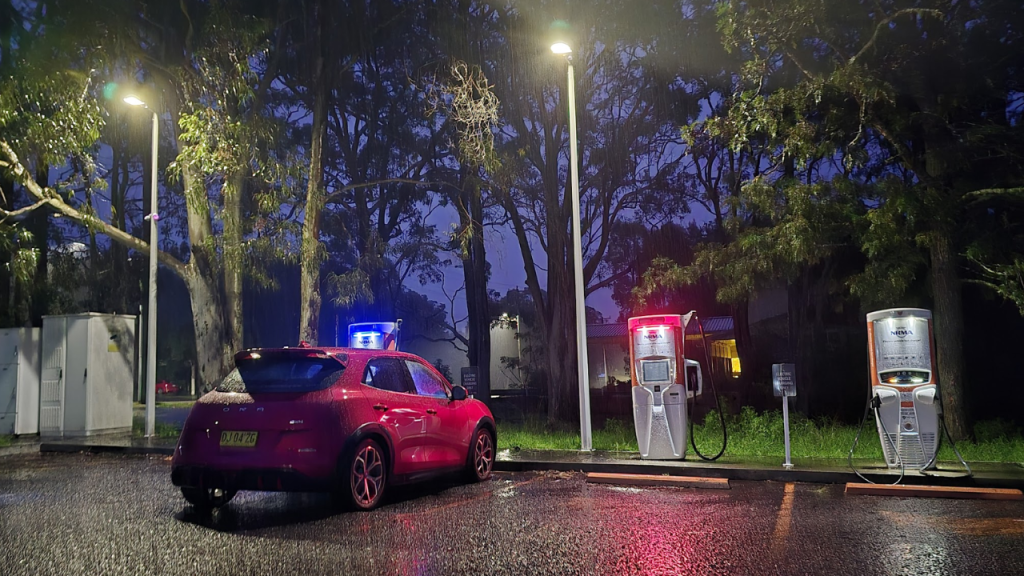
By the time those cars were gone, and I was finished charging, I had spent one hour and forty minutes at this public charger. It was cold and raining, I was tired and feeling a cold coming on. I then left for my Dad’s house, where I charged overnight, and headed home the next day.
Critics might be willing to write this off as a general ‘EVs don’t suit Australian roads and lifestyles’ experience, but I wouldn’t be so harsh. Again, this was not what the GWM Ora was built for, and it’s not something other EVs I’ve reviewed, particularly ones with faster public charging speeds and larger batteries, have struggled with.
But what it does tell us is that, while EVs are becoming cheaper, and that while battery technologies are improving, there’s still a gap in terms of what users would need, versus what they can be offered at this price point. When we say ‘cheapest EV’ we’re not saying ‘cheapest EV that’s as painless as a petrol car’.
Also, the Ora isn’t even the biggest problem here. These issues would have been alleviated had Australia’s public charging infrastructure been more built out. It’s still disappointing, despite the record adoption of EVs. None of these public chargers even had a roof; so I was constantly being rained on (again, not uncommon, but how hard would be to put a roof in?)
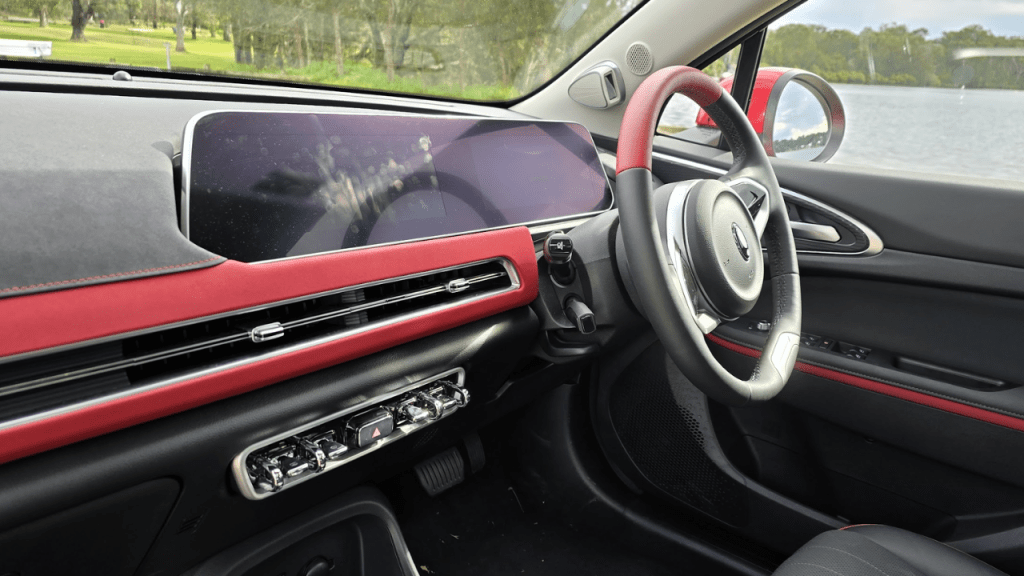
Here’s a better look at the steering wheel. The buttons on the wheel are tactile, but they’re all part of the same faceplate.
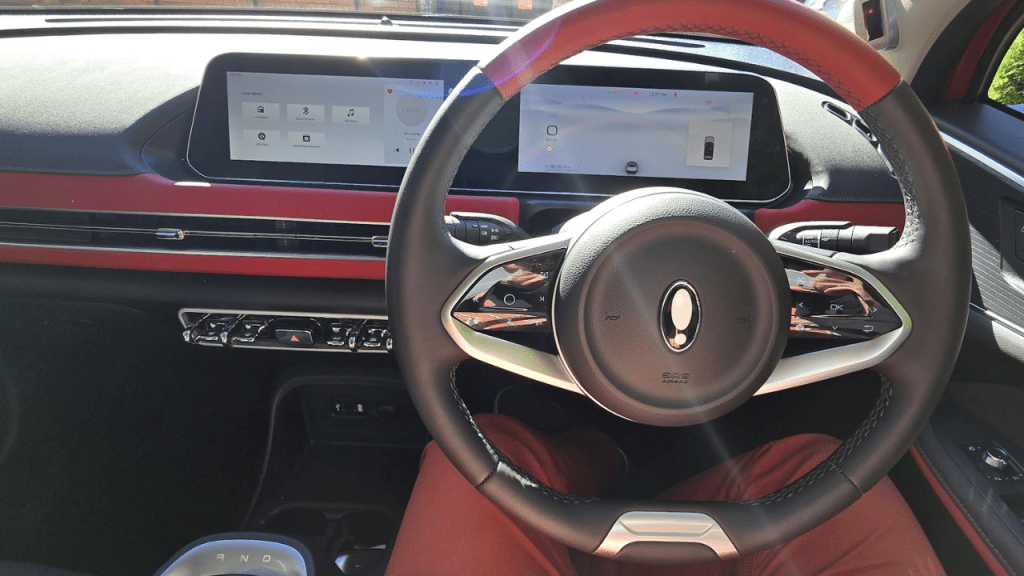
Ora-lright
On that journey, I did pick up on quite a few things, that I both love and hate about the GWM Ora. Firstly, driver feel: it could be better!
All of the models in the GWM Ora family are front-wheel drive, which naturally doesn’t feel as good as rear-wheel drive, or the much more demanding AWD. In the rain, which I was driving in most of the time, I had quite noticeable spin tyres at times, and despite driving the ‘GT’ variant, there was nothing sporty about the experience that wasn’t aesthetic. It was a stiff ride with a lot of bumps and road noise, with ‘Giti’ tyres (215/50) fitted to the car.
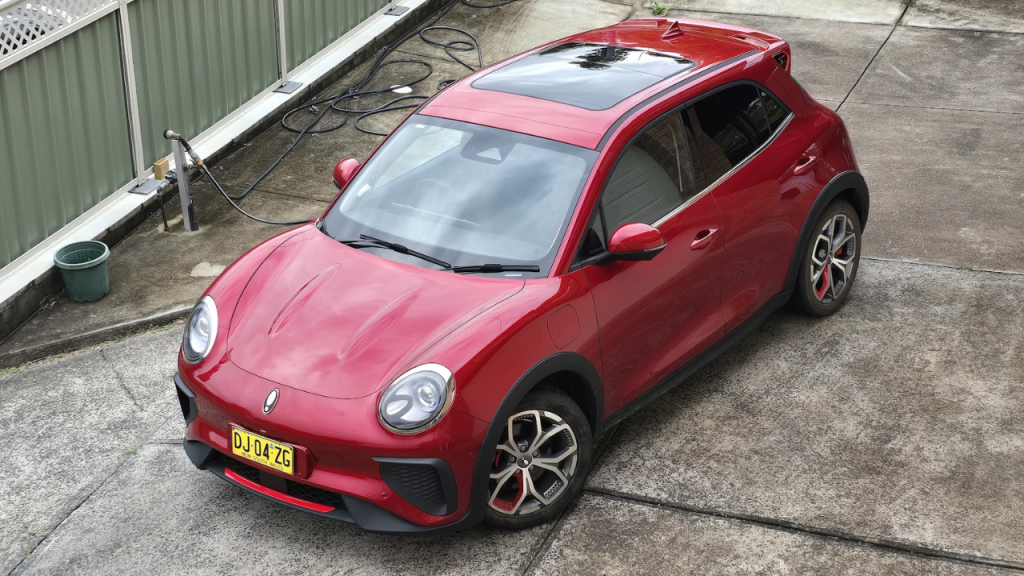
The car also has extremely worrying driver assistance. At four moments during my drive, it hallucinated a vehicle in front of it on the highway, and hit the automatic brakes, bringing my speed down from 110km/h to about 100km/h. A reminder as ever: driver assistance is NOT autopilot.

It’s also extremely prickly about lane assistance, ordering you to drive in the middle of the lane as closely as possible. I tend to skew slightly to the right when I’m on the road, safely in the lane of course, but never with the Ora. Otherwise, it would constantly beep at me. I’d be safely in the middle of my lane, but the Ora would say not safe enough.
This car looks good, there I said it. It’s unique and bubbly, clearly inspired by Mini and gunning for its lunch. It’s cute and not for everybody. The sunroof, openable and with a sunshade, is a rarity for electric vehicles and was extremely welcome (even if it’s limited to the Ultra and GT).
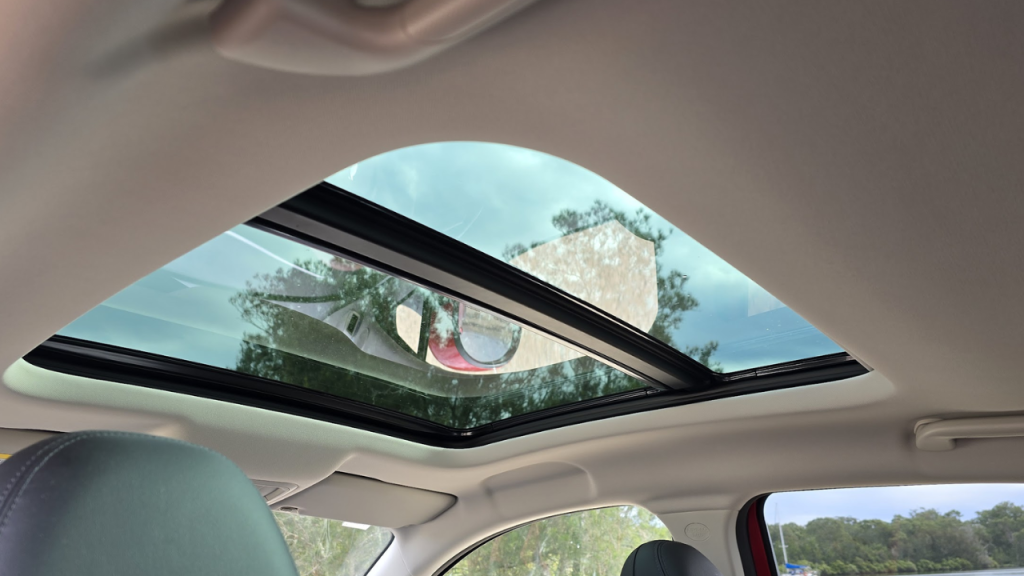
The lack of Android Auto made me quite mad, though. I was using my phone via Bluetooth audio, which made for an extremely painful experience. The blinker stalk also feels overdeveloped, it always clicks back to the central spot, leading to awkward situations where you’re clicking the thing back and forward to turn the blinkers off. It doesn’t need to be this way. The shifter has a similar problem where it’ll only select reverse, drive, or neutral if you click it to the precise mode. It just feels cheap and unintuitive.
The surround camera rocks. It’s everything it needs to be. The vision out of the back is great too, and the seats are nice.
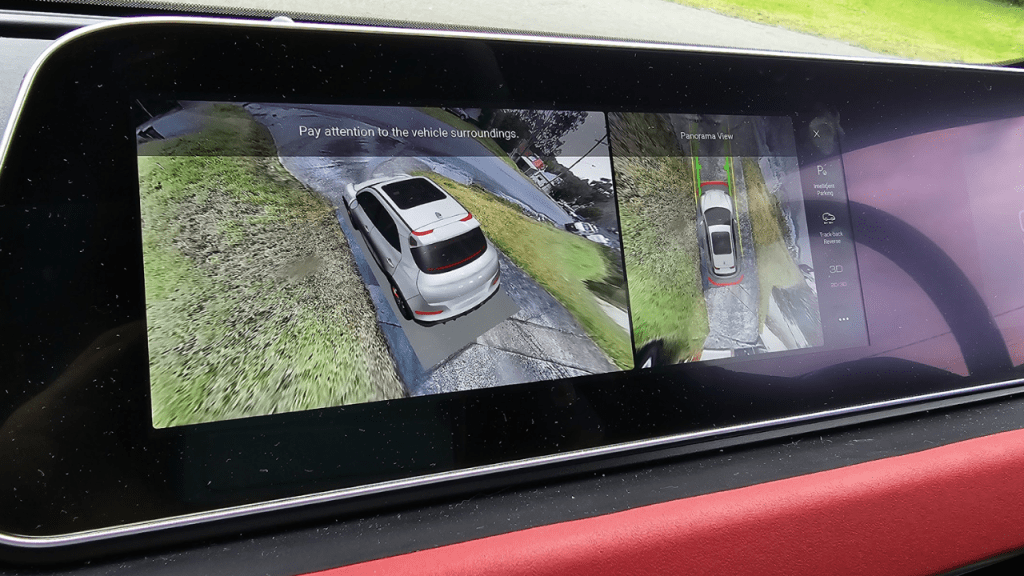
The system doesn’t communicate a lot of information well. For example, a persistent beeping noise turned out to be the car detecting my headphones case in the phone holder, to remind me that it was there. I have no idea why it was doing this. The car also displayed a power on/off button on its display that simply doesn’t exist, and its description of features in its settings are often vague (you can obviously resort to the manual).
The power button is only necessary to push when exiting the car. In all other circumstances, pushing the brake in will put the car into drive mode, following a long boot animation if you haven’t been behind the wheel for more than about 10 minutes. The power button will put the car into power on, but not drive mode.
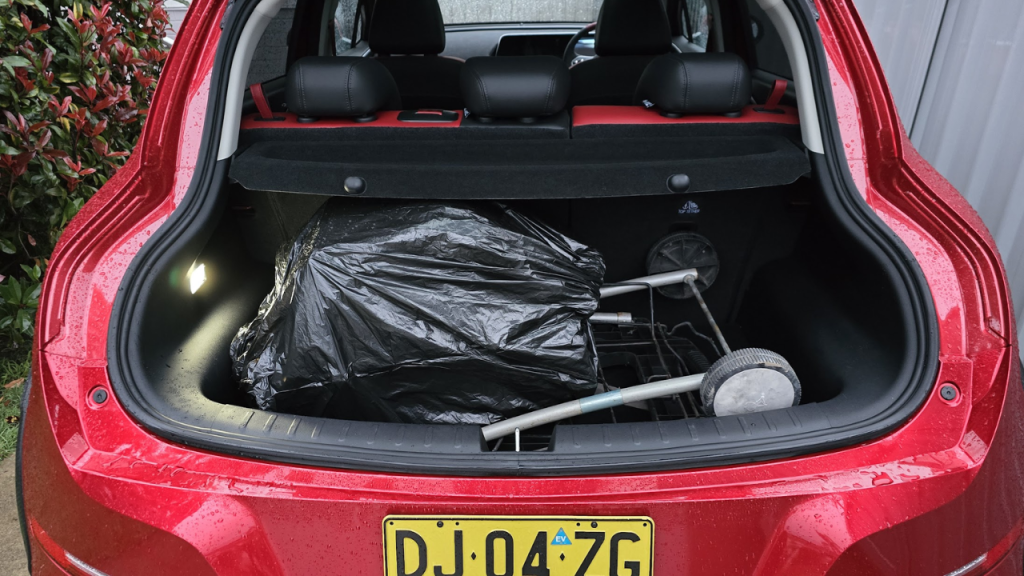
Finally, I wasn’t much of a fan of the boot’s lip (228-litre capacity, or 858L with seats down). It’s quite a deep edge for the boot, and I know it would get to me if I owned this thing. An electric boot on models as cheap as the Ultra and GT was also very welcome, though unnecessary for many drivers.
The verdict: should you buy the GWM Ora?
My rub with the GWM Ora comes from a place of sustainability. I’m not against households owning two cars, some families simply need to own two cars, but if the great push for electric cars is to save our environment, then electric cars should be capable of filling the gaps that would prevent the need for the ‘inner city car’ and the ‘day trips car’ to be separate entities.
The Ora doesn’t fill this gap, but it is a comfortable thing to drive around Sydney. Driving to the Matildas game on Monday in Olympic Park was a breeze, along with driving to work in the morning. It’s at its best in close traffic, but it can’t be trusted for day trips.
With that in mind, I think the entry-level and Extended Range models would be my pick of the bunch – the Ultra if you want those nicer features, and perhaps not the GT, as it only adds a sporty trim, bigger wheels, and sluggish auto parking. $35,990 speaks for itself, as does $40,990 if you want a car that’ll rival more expensive up-model versions of the MG4 and BYD Dolphin.
The lack of performance differences across the Ora range make it difficult to recommend the higher-end versions, as they all come with the same 126kW motors on a FWD platform. The top of my changes list for the Ora is a shift to RWD, an increase of DC capacity to 150kW, and perhaps a variant that can reach 500km WLTP. These things, all things the MG4 offers, would make the Ora range much more competitive – but perhaps that $35,990 model needs to be beaten by competitors.
The GWM Ora is a car for the city, so if you’re looking for an adorable commuter, this could be the one.
The GWM Ora is available now from $35,990.
Image: Zachariah Kelly/Gizmodo Australia
